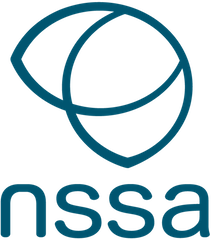Sturge Webber Syndrome – A short window to act
Some of us may be aware of the rare genetic syndrome with the pink-purple birth mark on the face; but most of us may not know much more than that. While there are many cutaneous skin disorders that present as ‘birth marks’, Sturge Webber Syndrome (SWS) is not superficial like these. SWS causes varying degrees of blood vessel malformation in embryonic development that leads to significant risk factors for the patients. The most significant risk factors for this syndrome are status epilepticus and stroke. These both often occur early in the patient’s life causing either major disability or death. Other common presenting disorders can include: stroke, glaucoma (affected side only), migraine, autism and endocrine disorders.
As I work in a major adult tertiary hospital, SWS patients are not seen as frequently as in a paediatric centre. On presenting to hospital a SWS patient will need to access a high level of neurological care and support. Care required involves regular (or preferably continuous) EEG monitoring for status epilepticus; CT/MRI to identify cerebral atrophy; calcifications and bleeds; and prompt (often multiple) anti-epileptic medication administration. Timing is absolutely critical for SWS patients - as a single seizure has a much higher chance than the normal neurological patient to precede status epilepticus. The reason for this is patients with SWS will experience ischemia of the affected brain tissue instead of the normal hyperperfusion during a seizure. Due to the existing leptomeningeal malformations, this opposite reaction can result in an increase brain tissue damage and the risk of status epilepticus or stroke. If the patient is in status epilepticus the standard protocol is followed; involving the administration of a midazolam infusion to inhibit further seizure activity. This may lead to an ICU admission to prevent seizures from clustering back into status epilepticus and allow recovery.
Seizures will often be localized to the same side as the facial birth mark, as this hemisphere is usually the one affected by abnormal development. The size of the facial birthmark is also a good indicator of how severe the blood vessel malformation is internally. Generally, the smaller the birth mark the better prognosis, unless the birth mark is medially located (forehead and nasal bridge). This would indicate that that both brain hemispheres are affected, which is not a good indicator.
If a SWS patient can avoid seizures at a young age, it has been observed via PET scan that metabolic changes from the malformations can be compensated over time. This compensation allows the patient to lead a relatively normal life if no seizures as a child are observed. In a small portion of paediatric cases neurosurgery may be an option to remove and repair some of the malformations. Most SWS patients will need lifelong anti-seizure medication and be aware of the usual seizure and stroke risk factors.
When providing medical support to SWS patients, we need to do so with the understanding of their medical background. They are much more likely to deteriorate quickly if seizures are not diagnosed and treated aggressively. Armed with this knowledge, be aware when you see a port wine facial birthmark, that the problem will be deeper than what’s on the surface.
References
Bar, C., Kaminska, A. and Nabbout, R., 2018. Spikes might precede seizures and predict epilepsy in children with Sturge-Weber syndrome: A pilot study. Epilepsy Research, 143, pp.75-78.
Boos, M., Bozarth, X., Sidbury, R., Cooper, A., Perez, F., Chon, C., Paras, G. and Amlie-Lefond, C., 2020. Forehead location and large segmental pattern of facial port-wine stains predict risk of Sturge-Weber syndrome. Journal of the American Academy of Dermatology, 83(4), pp.1110-1117.
Cho, S., Maharathi, B., Ball, K., Loeb, J. and Pevsner, J., 2019. Sturge-Weber Syndrome Patient Registry: Delayed Diagnosis and Poor Seizure Control. The Journal of Pediatrics, 215, pp.158-163.e6.
Irving, N., Lim, J., Cohen, B., Ferenc, L. and Comi, A., 2010. Sturge-Weber Syndrome: Ear, Nose, and Throat Issues and Neurologic Status. Pediatric Neurology, 43(4), pp.241-244.
Luat, A., Juhász, C., Loeb, J., Chugani, H., Falchek, S., Jain, B., Greene-Roethke, C., Amlie-Lefond, C., Ball, K., Davis, A. and Pinto, A., 2019. Neurological Complications of Sturge-Weber Syndrome: Current Status and Unmet Needs. Pediatric Neurology, 98, pp.31-38.
Luo, Y., Yang, Y. and Chen, X., 2020. A case report of a pregnant woman with Sturge-Weber syndrome. Journal of International Medical Research, 48(4), p.030006052091370.
Patel, R., Durant, E. and Freed, R., 2021. Parkes-Weber syndrome in the emergency department. BMJ Case Reports, 14(9), p.e241649.
Powell, S., Fosi, T., Sloneem, J., Hawkins, C., Richardson, H. and Aylett, S., 2021. Neurological presentations and cognitive outcome in Sturge-Weber syndrome. European Journal of Paediatric Neurology, 34, pp.21-32.
Sebold, A., Ahmed, A., Ryan, T., Cohen, B., Jampel, H., Suskauer, S., Zabel, T., Comi, A. and Rybczynski, S., 2020. Suicide Screening in Sturge-Weber Syndrome: An Important Issue in Need of Further Study. Pediatric Neurology, 110, pp.80-86.
Sebold, A., Ahmed, A., Ryan, T., Cohen, B., Jampel, H., Suskauer, S., Zabel, T., Comi, A. and Rybczynski, S., 2020. Suicide Screening in Sturge-Weber Syndrome: An Important Issue in Need of Further Study. Pediatric Neurology, 110, pp.80-86.
Subbaraman, D., 2017. Sturge –Weber Syndrome – A Case Report. Journal of Medical science and clinical research, 5(7).
Sugano, H., Iimura, Y., Igarashi, A., Nakazawa, M., Suzuki, H., Mitsuhashi, T., Nakajima, M., Higo, T., Ueda, T., Nakanishi, H., Niijima, S., Karagiozov, K. and Arai, H., 2021. Extent of Leptomeningeal Capillary Malformation is Associated With Severity of Epilepsy in Sturge-Weber Syndrome. Pediatric Neurology, 117, pp.64-71.
Tanriverdi, S., Terek, D., Koroglu, O., Yalaz, M., Tekgul, H. and Kultursay, N., 2013. Neonatal status epilepticus controlled with levetiracetam at Sturge Weber syndrome. Brain and Development, 35(4), pp.367-371.
Written by Jared Gaskell
Princess Alexandra Hospital - Brisbane

